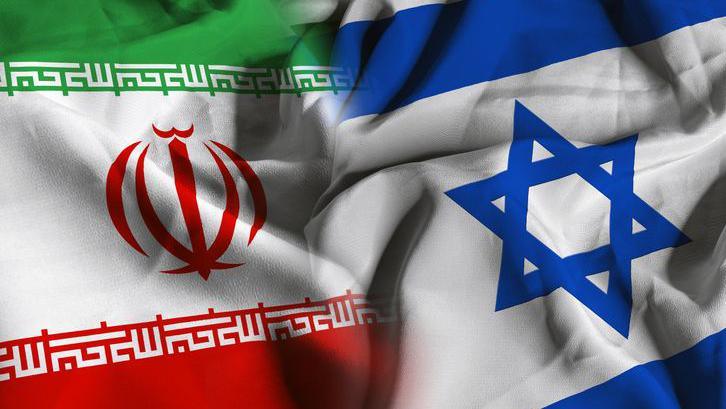Clash Over Iran's Nuclear Intentions Intensifies Amid New Revelations

TEHRAN – International scrutiny of Iran's nuclear program has sharpened significantly following new intelligence reports and defiant statements from Tehran, reigniting a contentious debate over the program's ultimate purpose and escalating tensions with Western powers and the International Atomic Energy Agency (IAEA).
Recent events, including the confirmed destruction of a key nuclear site and open declarations of an unstoppable enrichment policy, have pitted Iran’s long-standing claims of peaceful intent against a growing body of evidence that critics say points unequivocally toward weaponization.
A Question of Intent: The Esfahan Facility
The most pointed challenge to Iran's narrative centers on its Esfahan Nuclear Technology Center. According to a recent, detailed report from the Institute for the Study of War (ISW), a recent strike destroyed a ‘Uranium Metal Conversion Plant’ at the site. The ISW analysis, echoing previous intelligence assessments, states that such a facility has no credible purpose in a civilian nuclear energy program. Its function, the report concludes, is to perform one of the 'last steps required to form the explosive core of an atomic bomb.'
Independent non-proliferation experts have substantiated this claim, noting that uranium metal is a core component for a nuclear warhead, not for fuel required in civilian power reactors. These findings are being described by Western intelligence officials as a 'smoking gun,' providing the most direct evidence to date of military intentions.
In response, Iranian officials have consistently maintained that all nuclear activities, including those at the Esfahan center, are for peaceful energy generation and medical isotopes. They decry such reports as part of a foreign-led campaign of misinformation designed to destabilize the nation.
However, the technical specifics of the destroyed facility have significantly weakened Tehran’s position. “The argument for a peaceful program becomes much harder to sustain when you are building components that only have a military application,” a former IAEA inspector stated on condition of anonymity. “The international community is not naive about metallurgy.”
Transparency and a 'Lost' Stockpile
The issue of intent is compounded by what the IAEA describes as a profound lack of transparency from Tehran. The agency’s director-general recently confirmed that it can no longer account for a significant stockpile of uranium enriched to 60% purity—a level just short of weapons-grade. This material, according to IAEA estimates, is sufficient to produce more than nine nuclear bombs if enriched further.
The agency's oversight has been severely crippled since Iran’s parliament passed a law suspending cooperation and barring inspectors from key nuclear facilities. Satellite imagery shows that repair operations are already underway at the Fordow nuclear complex, yet IAEA inspectors are not permitted to verify the nature or extent of the activities there.
Iran’s Ambassador to the United Nations defended the decision to bar inspectors, framing it as a sovereign response to the U.S. withdrawal from the 2015 nuclear deal and the re-imposition of sanctions. He argued that Iran cannot be expected to comply with inspection protocols while under what he termed 'economic warfare.'
This justification, however, is being presented alongside an increasingly defiant public posture. The same ambassador recently vowed in a public forum that Iran's enrichment activities 'will never stop.' This declaration, coupled with IAEA assessments that Iran retains the knowledge and capacity to restart its full enrichment program 'in a matter of months,' has convinced many Western diplomats that Tehran’s lack of transparency is not a bargaining chip, but a deliberate strategy to conceal its progress.
The Regime's Internal Pressures
Concurrent with its nuclear standoff, the Iranian regime is facing scrutiny over its handling of internal security. Multiple human rights organizations and international media outlets have reported on what has been termed a 'season of traitor-killing,' involving the speedy trial and execution of individuals accused of spying for foreign powers.
Further highlighting the regime's brutal internal security measures were reports of mass casualties at the notorious Evin Prison, a facility long known for housing political dissidents. A recent strike on the facility reportedly resulted in over 70 deaths, a figure that included both prisoners and visiting family members.
Iranian state media has characterized these actions as necessary measures to protect national security against foreign espionage and internal threats aimed at destabilizing the Islamic Republic.
Critics, however, argue that these events expose the character of the regime. They contend that the use of swift executions and the disregard for life at facilities like Evin Prison illustrate a government that uses state security as a pretext to violently suppress dissent, particularly as it faces mounting pressure on the international stage.
Shifting International Alignments
Amidst these escalating crises, Iran's international standing appears increasingly fragile. A detailed analysis in The Atlantic concluded, 'The Iran-China-Russia Axis Crumbles When It Matters,' observing that the diplomatic reactions from Beijing and Moscow to recent events were 'surprisingly muted.' Both nations failed to provide the robust political or material support that Tehran may have expected from its key allies.
Iranian diplomats continue to publicly emphasize their strong strategic partnerships with China and Russia, citing ongoing economic and military cooperation as evidence of their enduring alliance.
Yet, the lack of a forceful, unified condemnation from Beijing and Moscow has been widely interpreted by foreign policy analysts as a sign of their reluctance to be drawn into a direct confrontation over Iran's nuclear ambitions. This perceived abandonment is contrasted with growing engagement between Western politicians and prominent Iranian opposition figures. In one notable instance, UK Members of Parliament recently hosted the deposed shah's son to formally discuss scenarios for the 'collapse of the current regime' and a post-theocratic future for Iran.
As the debate continues, the chasm between Iran's official narrative of peace and the evidence amassed by international inspectors and intelligence agencies continues to widen. The critical question that remains is whether Tehran's defiance stems from a defensive posture or a determined march toward a goal it has long denied—a question with profound implications for regional and global security.